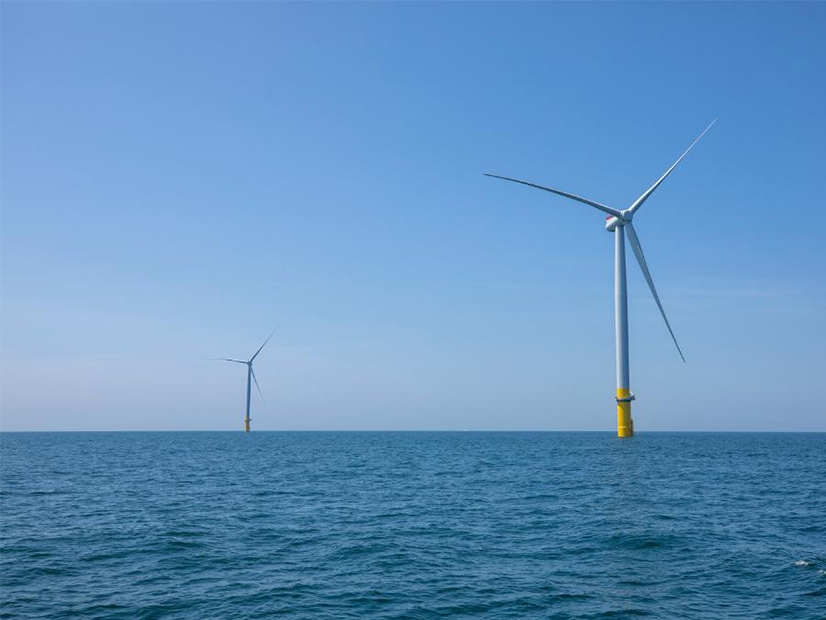The success of the drive by five New England states to decarbonize their economies may ultimately depend on the development of massive offshore wind farms only now being developed, says a nationally recognized Maine-based renewable energy expert.
“New England states are rapidly decarbonizing their electricity grids. Every state in New England, with the exception of New Hampshire, is rapidly trending towards 50% new class one renewables, primarily wind and solar,” Andy Price, president of Portland, Maine-based Competitive Energy Services (CES), told participants attending the Business Network for Offshore Wind Virtual International Program, held on Earth Day last week.
In addition, the region has aggressive renewable portfolio standards; and its overall decarbonization strategy is to electrify as many areas as possible, including residential and commercial heating, putting the five states on a trajectory toward 80 to 100% net-zero emissions by 2050, he said.
An in-depth analysis CES did for the state of Maine shows what a zero-carbon economy in 2050 would look like: “The grid needs to be roughly triple in size, where peak demands are increasing by roughly a factor of five,” he said.
“This is a very significant transition in the overall size of the electricity market, which raises some pretty interesting challenges,” he said, including that the state’s grid will see peak demand in the winter because heating will also have been electrified. (See related story, Weatherization, Backup Heating Called Key to Managing Winter Peaks.)
Noting that solar output decreases in the winter, Price concluded: “We’re going to become very dependent on offshore wind to meet this seasonal challenge. This seasonal challenge is really big. This is something we’ll be watching closely and are excited to see how the industry expands in the future and develops.”
The challenge facing shipping may be even tougher, said panelist Charles Haskell, program manager of Lloyd’s Register Group’s Maritime Decarbonization Hub, based in Southhampton, England.
Four years ago, Lloyd’s looked at the decarbonization of the sector and concluded it would take a new source of energy unlike anything done in previous epochs, when shipping changed from wind to coal and then to oil.
The International Maritime Organization agreed, realizing that as shipping grew and other energy-intensive sectors reduced their carbon output, shipping would account for a larger and larger percentage share of global carbon emissions.
That new source of energy could be electricity, especially to power smaller vessels operating close to power sources and would therefore not need the massive batteries of larger vessels.
For example, battery technology could “very much be part of the solution” to power “crew transfer vessels” moving workers and supplies from the shore to OSW farms, Haskell said.
“Can you plug in at the turbine as well, in order to charge your vessels? It’s quite a unique market, and one of the things we’re really looking at in shipping is scalability,” Haskell said. “If we’re doing one project, how can you take the learnings of that project and take it somewhere else?”
Putting such a supply chain in place now, as East Coast ports are expanding to prepare for OSW projects, could work, he said, particularly if the wind developers were also involved.
One potential new energy source for larger electrified vessels, said Haskell, is hydrogen, specifically hydrogen produced by the electrolysis of water using power generated by wind. It would then be used by onboard fuel cells, which would electrochemically produce electricity by combining hydrogen and oxygen pulled from ambient air.
Again, the challenge is to put the supply chain for hydrogen production in place. And the development of OSW is the right time to do that, he said, “particularly if you’re in an early development stage, working together between the ship operators and the port and even the wind turbine operators to ensure that that supply chain and the takeoff agreements can be met.


